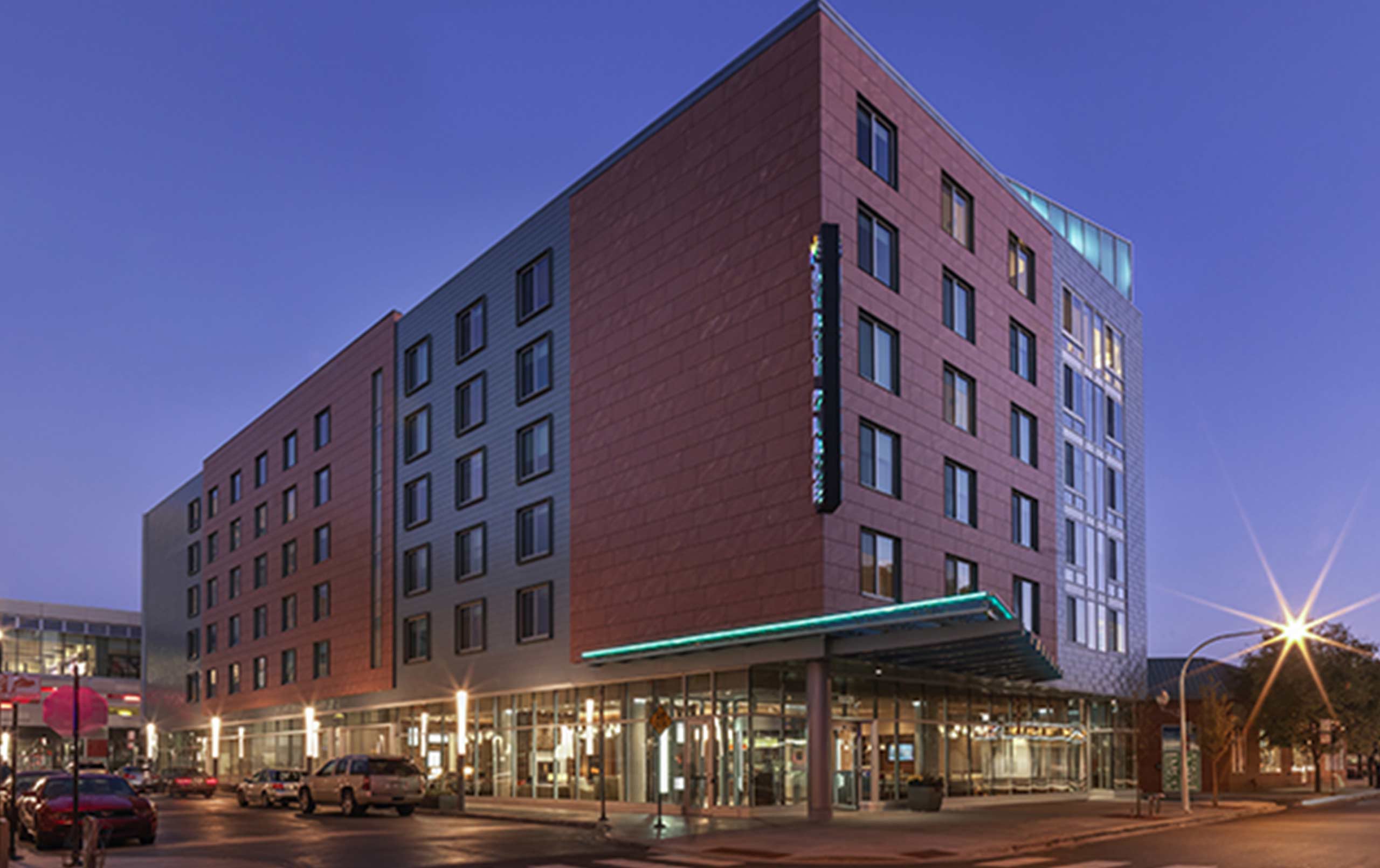
Did guests get the experience that they paid for? This question has long haunted hotel operators.
Hotels generate an experience. The factors that contribute to that experience range from overall service and speed of check-in to dining and cleanliness. These things are critical, but it all starts with what creates the first impression: the facility.
Before guests step up to the reception desk, they take in the hotel’s façade, and then explore the lobby. If they are disappointed or even unimpressed, that sets the tone for their stay. If the design energy wows them, however, the hotel has taken a critical first step in securing guests who will not only return, but who will also tell others about their positive experience. First impressions count!
This series will offer tips on how hotel operators and designers can achieve facilities that wow guests at their first encounter, and help create positive memorable experiences throughout their stay.
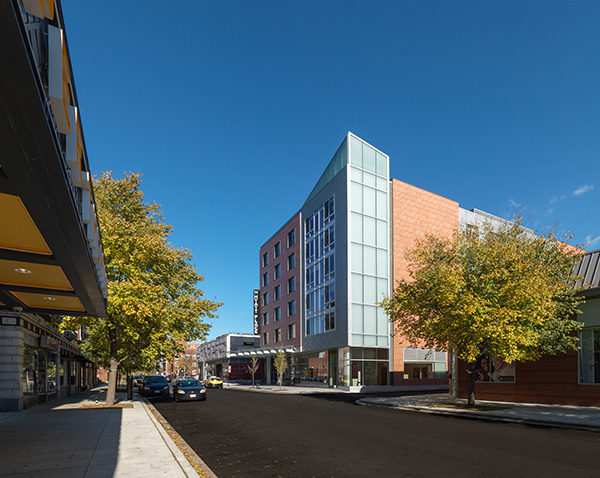
Appeal to Many Generations
One challenge that the hospitality sector constantly grapples with is how to draw different generations of people to one facility.
It was a challenge that developers The Olympia Companies and Smart Hotels faced when they set out to bring to Chicago’s prestigious Hyde Park neighborhood its first new hotel in over 50 years.
Among the many projected guests for Hyatt Place Chicago South/University Medical Center were Millennials, Gen Xers, Baby Boomers, fun-seekers, business travelers, families of students at the nearby University of Chicago Campus and Medical Center, tourists, and arts enthusiasts. Many different ages, many different interests.
The hotel design needed to capture the urban, multigenerational vibe of the site that it would occupy: the renewed Harper Court mixed-use development. Moreover, Hyde Park residents didn’t want it to clash with the cherished marble and masonry structures that populate the historic Chicago neighborhood. It was, after all, their first new hotel in half a century. Finally, the design needed to reinforce the Hyatt Place brand.
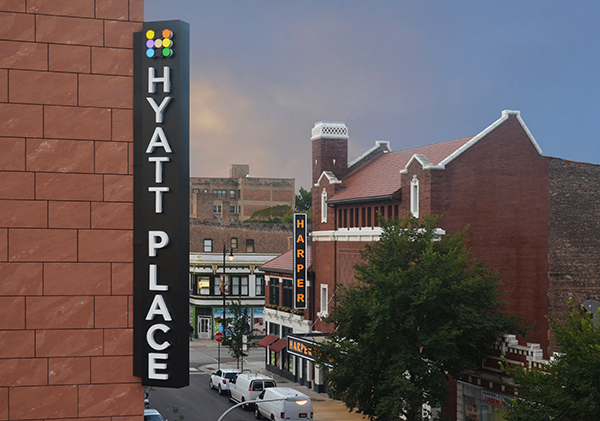
Be a Good Neighbor
A hotel’s design should complement the structures that surround it. It also needs to respect the concerns and issues of those who live nearby.
For Hyatt Place Chicago South/University Medical Center, the developers and Legat Architects met with Hyde Park residents. These community input sessions inspired the hotel façade design and gave locals a sense of ownership. The resulting design features porcelain tiles and zinc shingles that usher in a modern image, but their appearance—the colors and segmentation resemble masonry units—also respects the community’s historic context.
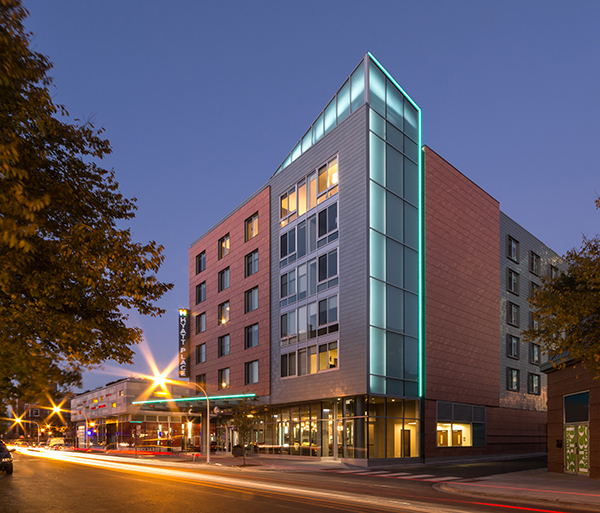
Tweak the Prototype
Another important factor in hotel design, especially when it comes to joining long-established neighborhoods with a distinct aesthetic, is a willingness to take some liberties with the prototype.
The overall appearance of Hyatt Place Chicago South/University Medical Center incorporates elements from the brand standard, but adapts the design to fit into the unique character of the neighborhood and capture a multigenerational audience. Examples include a glass canopy, a glass “edge” that illuminates the façade materials, customized artwork, and special lighting.
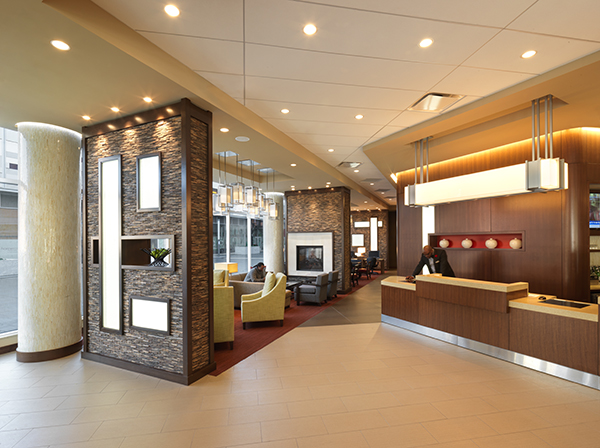
Design Makes a Difference
This summer, Hyatt Place Chicago South/University Medical Center will celebrate five years since its completion.
According to John Schultzel, The Olympia Companies’ vice president of hotel management, last year the hotel ran among the highest occupancies of any select service hotel in Chicagoland and came in at number one in its competitive set.
Schultzel concurs that the hotel’s design and multigenerational appeal have helped fuel its success.
“The hotel does a nice job of appealing to a broad cross section of travelers, from university dignitaries to visiting parents and neighborhood residents,” he said. “It provides a contemporary and stylish hotel product to a market that is underserved with high-quality hotel experiences.”
And does the community enjoy its first new hotel in fifty years?
During a post-construction visit, Mike Zimmerman, vice president of The Olympia Companies, struck up a conversation with someone at the hotel’s bar. Zimmerman said, “I asked her what brought her to the hotel. She said she was local, and had just stopped in to watch her favorite TV show. That’s what this project is all about . . . creating a destination that’s attractive to many visitors, but also where locals feel welcome.”
Contact us to learn more about hospitality design or comment below to share your thoughts on this post.


